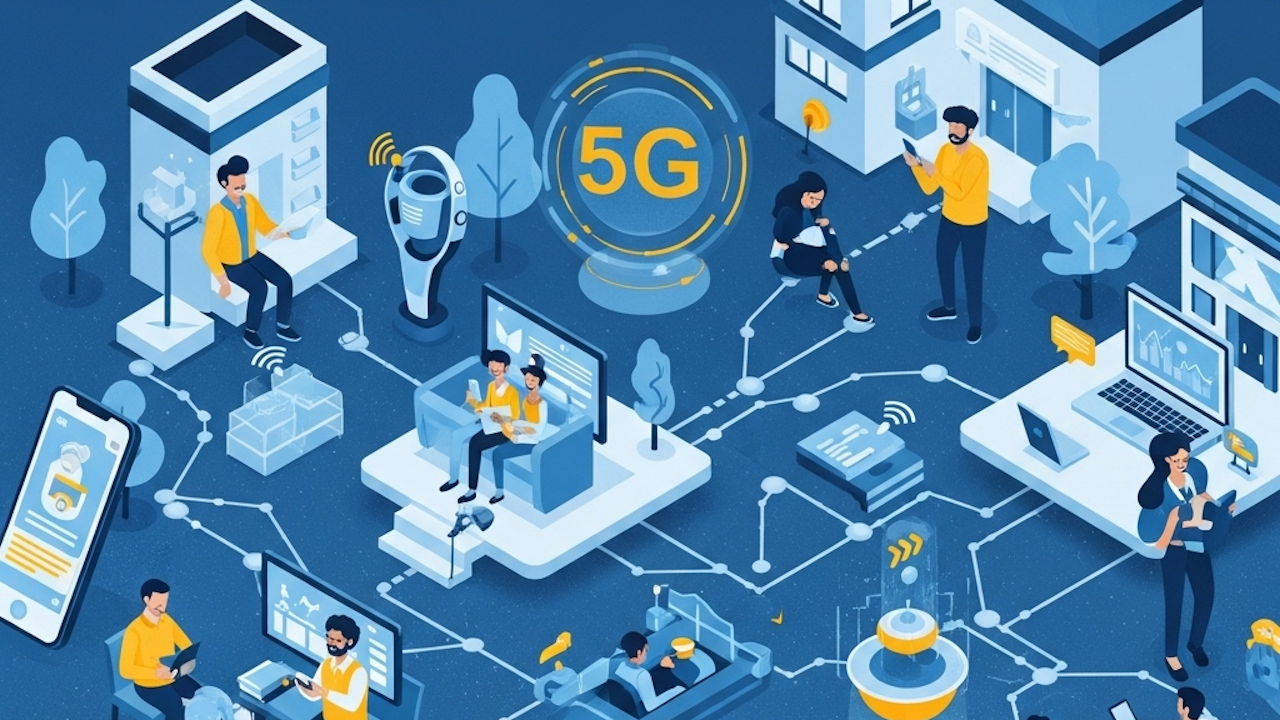The advent of 5G technology is transforming the way people connect, communicate, and interact with the digital world. As the fifth generation of mobile networks, 5G offers unprecedented speed, low latency, and increased capacity, enabling new applications across various industries. With its potential to revolutionize connectivity, 5G is not only enhancing mobile experiences but also reshaping business operations, healthcare, transportation, and smart cities. This technology is set to redefine the digital landscape, providing a foundation for innovations that were once considered futuristic.
Enhanced Mobile Connectivity
One of the most immediate and noticeable impacts of 5G is the improvement in mobile connectivity. With speeds up to 100 times faster than 4G, users experience seamless browsing, ultra-fast downloads, and buffer-free streaming. This enhancement enables high-definition video calls, cloud gaming, and immersive virtual and augmented reality applications. Additionally, 5G networks can handle significantly more devices simultaneously, reducing network congestion in densely populated areas and ensuring consistent performance.
Revolutionizing Business Operations
The integration of 5G into business environments is fostering greater efficiency and productivity. Companies leveraging 5G technology can take advantage of real-time data processing, enabling smarter decision-making and automation. For instance, manufacturing plants are implementing 5G-powered automation systems to monitor machinery, predict failures, and streamline operations. Remote work is also benefiting, with employees gaining access to high-speed, low-latency networks that support seamless video conferencing, cloud collaboration, and secure data transfers.
Advancements in Healthcare
5G is playing a critical role in the transformation of healthcare services. Telemedicine, which has gained momentum in recent years, is greatly enhanced with 5G’s high-speed, low-latency connectivity. Physicians can conduct virtual consultations with minimal lag, access high-resolution medical imaging remotely, and even perform robotic-assisted surgeries from distant locations. Wearable health devices connected via 5G can provide real-time patient monitoring, alerting healthcare providers to potential emergencies and improving patient outcomes.
Smart Cities and Infrastructure
Urban development is being redefined by the implementation of 5G in smart cities. With the ability to connect millions of devices, 5G supports the deployment of smart infrastructure, including traffic management systems, energy-efficient buildings, and advanced security solutions. Real-time data collection and analysis enhance public services, reduce energy consumption, and improve overall urban efficiency. For example, intelligent traffic management systems use 5G to analyze congestion patterns, optimize signal timings, and reduce travel times, ultimately leading to a more efficient and sustainable urban environment.
Transforming Transportation and Autonomous Vehicles
The transportation industry is undergoing a significant shift with the introduction of 5G. Autonomous vehicles rely on ultra-fast and reliable connections to process vast amounts of data in real time. With 5G, self-driving cars can communicate with traffic signals, other vehicles, and road infrastructure, enhancing safety and efficiency. Public transportation systems also benefit from 5G-enabled predictive maintenance, ensuring smoother operations and reduced downtime. Additionally, logistics and supply chain management are becoming more streamlined with real-time tracking and improved fleet management.
Enabling the Internet of Things (IoT)
5G is accelerating the expansion of the Internet of Things (IoT), connecting billions of devices across various industries. From smart homes with interconnected appliances to industrial IoT applications in factories, 5G enables seamless communication between devices. This increased connectivity enhances automation, optimizes resource utilization, and improves overall efficiency. Businesses and consumers alike are benefiting from IoT solutions powered by 5G, with applications ranging from smart agriculture to connected healthcare ecosystems.
Enhanced Security and Public Safety
Public safety and emergency response systems are also experiencing improvements with 5G. Law enforcement agencies can leverage high-speed networks for real-time surveillance, rapid data sharing, and enhanced communication among officers. Emergency response teams can utilize augmented reality applications to navigate disaster-stricken areas more effectively. Additionally, smart city security solutions, such as facial recognition and AI-driven threat detection, are becoming more efficient with 5G-powered connectivity.
The Future of Entertainment and Media
The entertainment industry is witnessing a major transformation with the adoption of 5G. Streaming services can deliver ultra-high-definition content with minimal buffering, while cloud gaming platforms offer real-time multiplayer experiences without the need for high-end hardware. Augmented and virtual reality experiences are becoming more immersive, paving the way for new forms of interactive storytelling and entertainment. Live events, including sports and concerts, are also benefiting from 5G’s ability to provide seamless and high-quality streaming experiences for audiences worldwide.
Economic Growth and Job Creation
The widespread implementation of 5G is expected to drive economic growth and job creation. As industries adopt 5G-powered technologies, new business opportunities emerge, leading to increased investments and job prospects. The demand for skilled professionals in fields such as network engineering, cybersecurity, and software development is on the rise. Additionally, startups and entrepreneurs are leveraging 5G to innovate in areas such as smart applications, AI-powered solutions, and next-generation connectivity services.
Challenges and Considerations
Despite its numerous benefits, the deployment of 5G comes with challenges. Infrastructure development requires significant investment, and the rollout process can be complex. Regulatory policies, cybersecurity risks, and concerns regarding data privacy must also be addressed. Additionally, ensuring equitable access to 5G services across rural and underserved areas remains a priority. Overcoming these challenges will be crucial in realizing the full potential of 5G technology.
The Road Ahead
As 5G continues to expand, its transformative effects will become even more apparent across industries and daily life. The technology will serve as the backbone for innovations in artificial intelligence, edge computing, and next-generation communication systems. With ongoing advancements and increasing adoption, 5G is set to redefine the way people interact with technology, shaping a more connected, efficient, and intelligent world.

